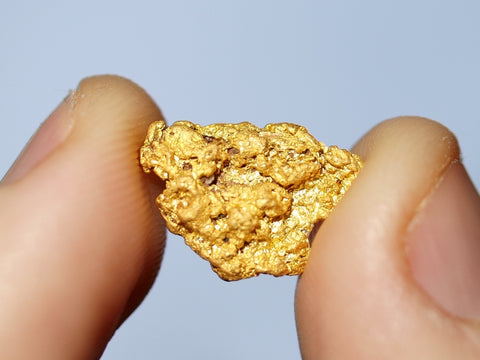 Pure Gold Nugget
Pure Gold Nugget
You are probably familiar with the idea of 14k, 18k, 22k, 24k gold, maybe even 10k gold. You've probably seen a 750 stamp or a 585 stamp inside your jewelry. But do you know what those different numbers mean? I'm here to explain to you.
As early as 4000 BC, people were using gold for ornamental objects, jewelry and as a currency. In 1200 BC, the Egyptians mastered the art of hammering gold with other alloys for hardness and color variation. Since 1200BC, we, as jewelers, have established industry standards to best communicate to our clients WHAT exactly they are buying when they are buying it. So, let me break it down for you!
24k Gold: Pure, 99.9% Gold (Mother Nature cooks in a messy kitchen, hence the 0.01% variation). Europeans use a system where gold is on a scale of 1000, so 24k Gold is marked 999. 24k Gold is best for gold bars or things that won't be used a lot as it the element in it's purist form is soft. You will never see white gold as 24k gold because when gold is in it's purist form, it's gold colored. Skip to 18k if you're interested in white gold :)
22k Gold: 91.5% Gold, or 915 on the European scale. This karat weight is very common in Indian made jewelry with rich gemstones to contrast the gold saturation. Still very soft though, so I would not advise for pieces that get a lot of exposure to wear (think bracelets or rings).
18k Gold: 750 parts pure gold, 250 parts alloys or other metals (75% gold). The other metals are what give gold it's strength and color variation. Rose gold is pure gold mixed with copper and other alloys. White gold is pure gold most commonly mixed with palladium, nickel, and platinum. This gold exhibits durability as well as purity! It should be marked somewhere on your jewelry with a '750' or '18K'.
14k Gold: 58.5% gold, or 585 parts pure gold, 415 parts alloys or other metals. 14k Gold is often recommend for pieces with small, minute details to preserve the strength of the metal. It has a great balance between durability and the look of gold. It should be marked either 585 or 14K. If you have a nickel allergy (like me!), I would suggest purchasing 18k gold instead of 14k gold (there are other options to handle your allergy as well, email info@annapjay.com to learn more).
10k Gold: 41.6% gold. The United States minimum to be labeled gold. It is primarily other metals, and is the cheapest price because of it. APJ does not work with 10k Gold, but there are some estate and vintage pieces that you could come across that are 10k gold. I would not recommend setting any fine gemstones into 10k gold.
As I publish this, the price of gold is the highest it's been in decades (almost $1750/oz!), and I believe you should understand why something is priced as it is. There are different standards for each country with exporting and importing as far as gold goes, so you should make sure you're always working with a trusted jeweler to source and create items for you.
Have more questions regarding gold? Email info@annapjay.com and we can discuss further!


